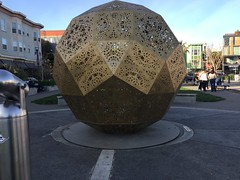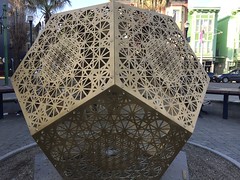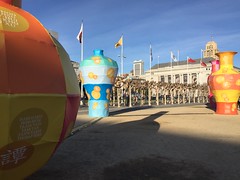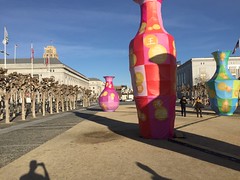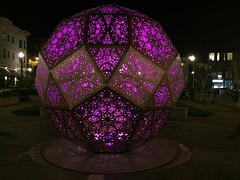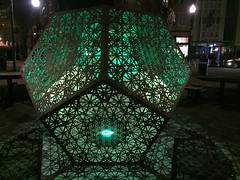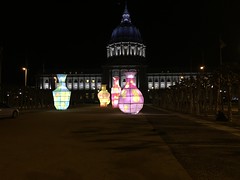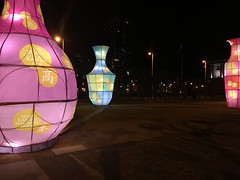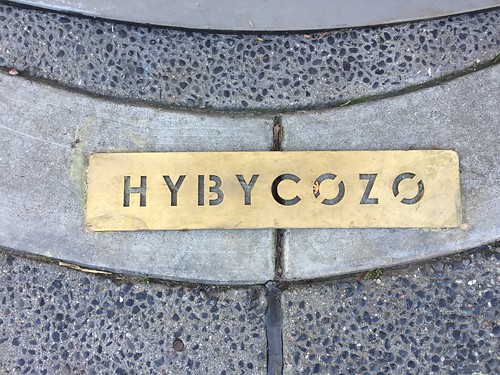
If you’ve ever read this blog before, you’ve probably figured out that I spend a lot of spare time wandering the streets of San Francisco and taking photos of stuff. (Hey, it keeps my fitness tracker happy, okay?) On Sunday I happened to come across two strangely similar temporary public art installations, one in Patricia’s Green in Hayes Valley, and the other in Civic Center just outside City Hall.
But before we get into that, let me get philosophical for a moment. When it comes to public art, I appreciate the recent trend in temporary installations. The idea of permanent public art seems both ridiculous and impossible. Ridiculous because what people appreciate about an art piece today may be loathed in a decade or three, especially in the harsh light of public space. Impossible because nothing is truly permanent; if vandalism doesn’t destroy the piece then natural disasters certainly will. Or the piece proves so far ahead of its time that it simply doesn’t work. Even if the civilization that created and loves the art still exists, good luck in a few billion years when the sun burns out… yup, I went there. Permanent my ass. Nothing truly lives forever, the “permanence” of a work of art really boils down to whether it has an end date marked on the exhibition calendar or not.
For these reasons, I’m a fan of temporary public art. If the work resonates with people they’ll find a way to keep it around longer — remember what happened to The Bay Lights? People responded so well that its temporary status got a reprieve almost immediately.
So back to Sunday. First, I found myself wandering through Hayes Valley and wound up at Patricia’s Green. This space has been the site of many temporary public art exhibitions, which are generally tied to Black Rock Arts Foundation and therefore have a special relationship with Burning Man. The current exhibit is from HYBCOZO with two three dimensional geometric shapes made of metal, carved with fractal-like shapes.
Next, I found myself a few blocks away at City Hall where Hong Kong-based artist Freeman Lau had installed a series of oversized lanterns to mark Chinese New Year.
At first glance, these two pieces seem to have little in common, aside from the medium of temporary public sculpture. But looks can be deceiving. I poked my head up to the installation at Patricia’s Green. What’s this strange mechanism?
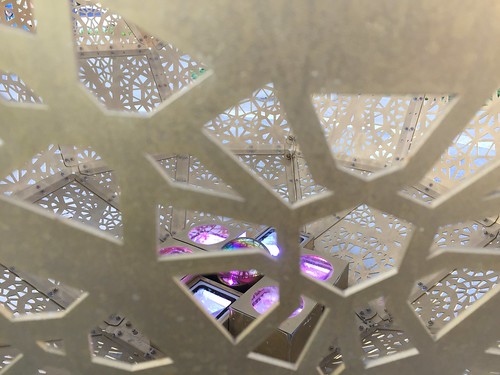
Likewise, what’s up with those plastic anti-trip strips between the lanterns at City Hall?
Oh… there’s a connection here — light. Lanterns aren’t for the daylight, and neither are those geometric sculptures at Patricia’s Green. If ever there was a time of year for temporary public art that took advantage of light, it’s in the winter when light is scarce in the evenings. So I took another stroll at night to find out what these installations look like without the sun.
First, here’s HYBYCOZO‘s pieces at night:
The colors of both shapes faded in and out and changed between colors in a dynamic fashion that’s difficult to capture. There were so many people wandering around taking photos that I couldn’t get a good video, but even that would hardly do it justice. Do yourself a favor and get over there when it’s dark out and see for yourself. That said, I bet this would be even more impressive if Patricia’s Green weren’t so well lit at night — I’m sure HYBYCOZO’s works are more delightful at places like Burning Man where city lights don’t impede the shadow patterns they cast on the ground.
Second, here’s the lanterns outside City Hall at night:
While the lanterns don’t have the dynamic nature of the metal shapes, they’re strikingly bright and colorful against the black and white facades of the main buildings surrounding Civic Center Plaza. Just like during the day, at night both professional photographers and couples taking selfies with the giant lanterns impeded my view, making it a challenge to get a clear shot. But from the perspective of the artist, this looks like a resounding success.
So here’s to temporary public art, and especially this strange new frontier of electrically illuminated public art designed for viewing at night. We’re clearly on to something here, and I’m happy to see that San Francisco is on the forefront.

